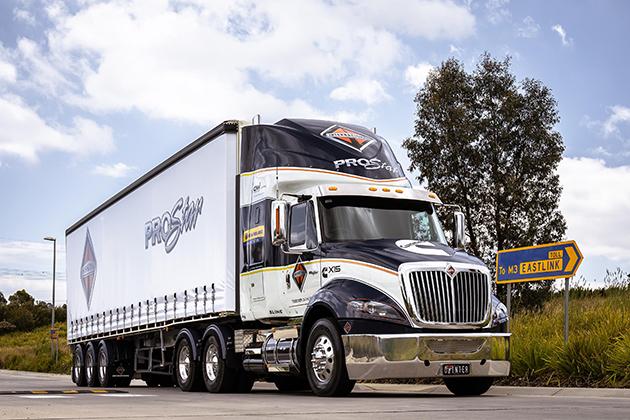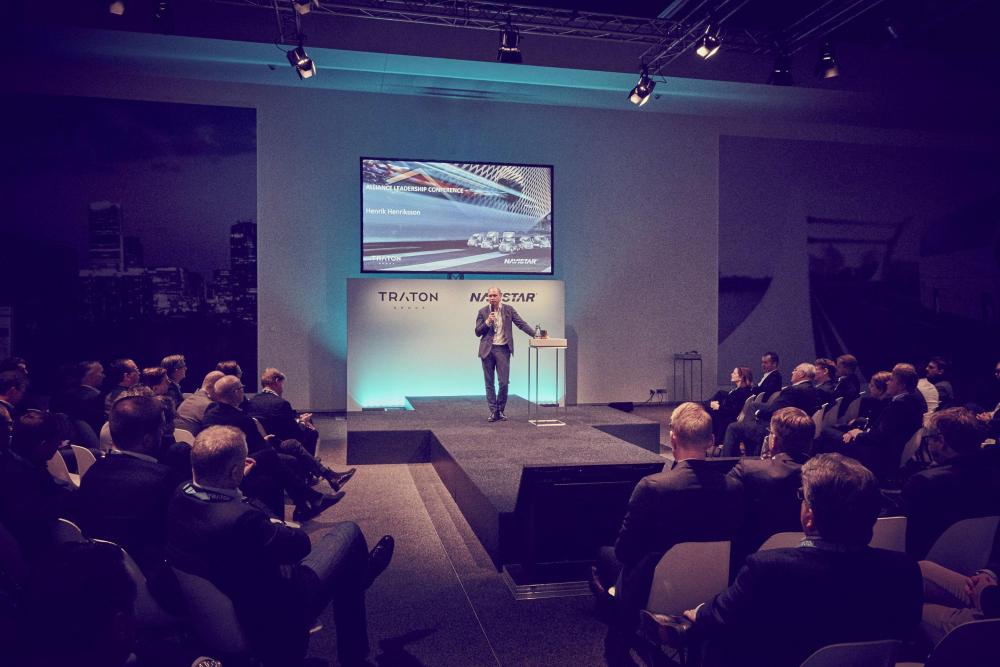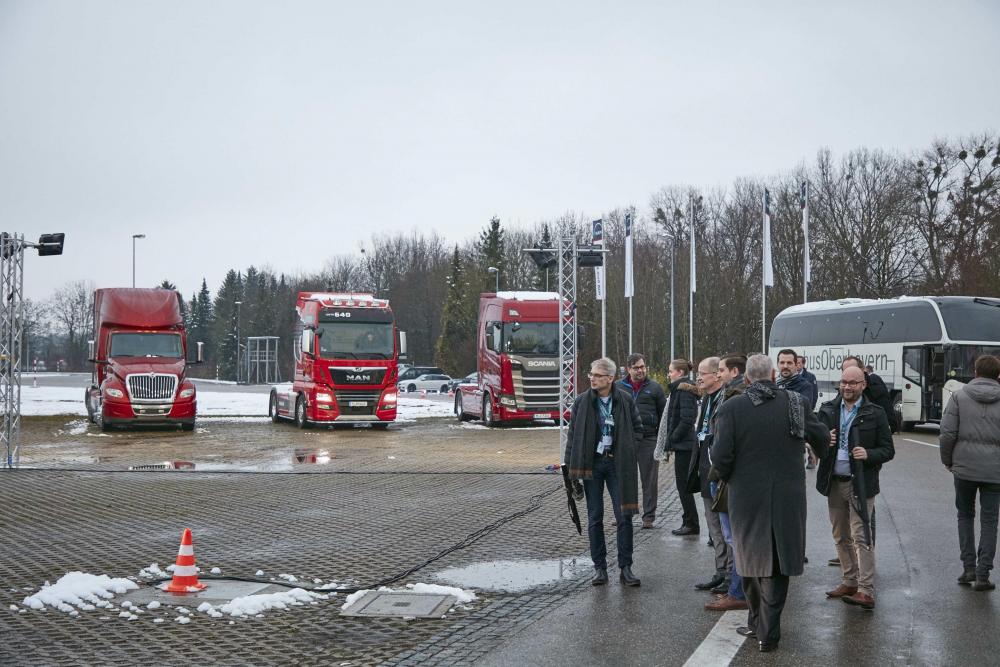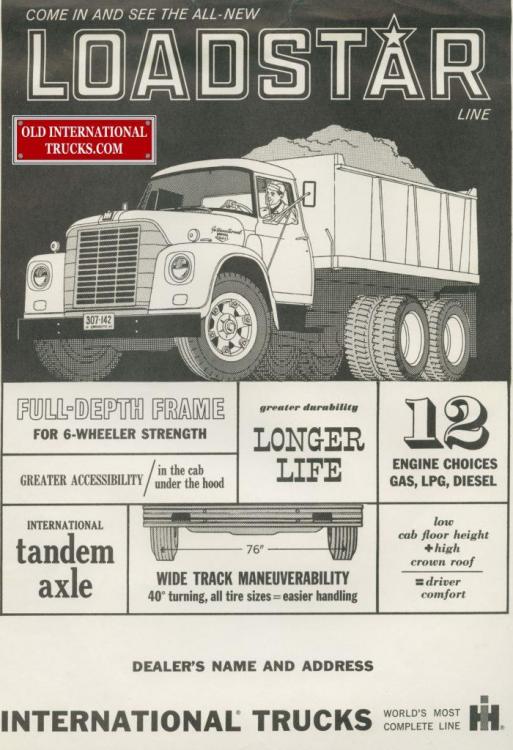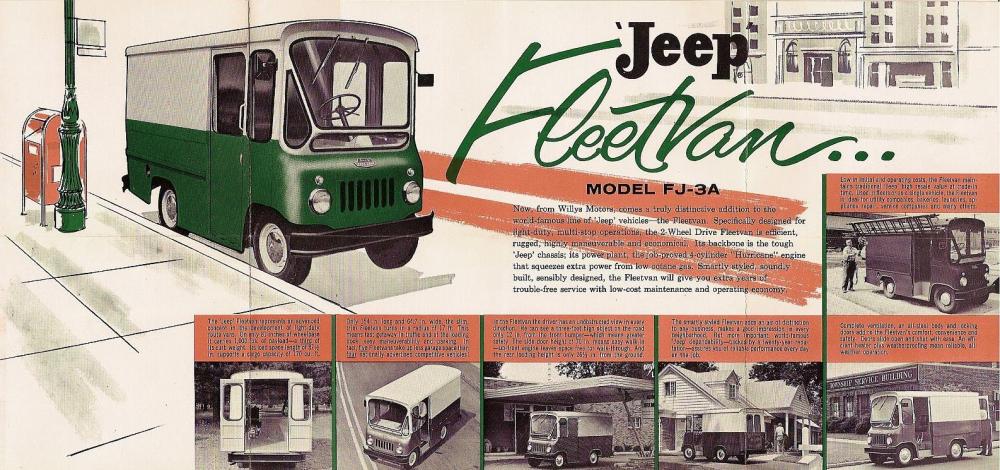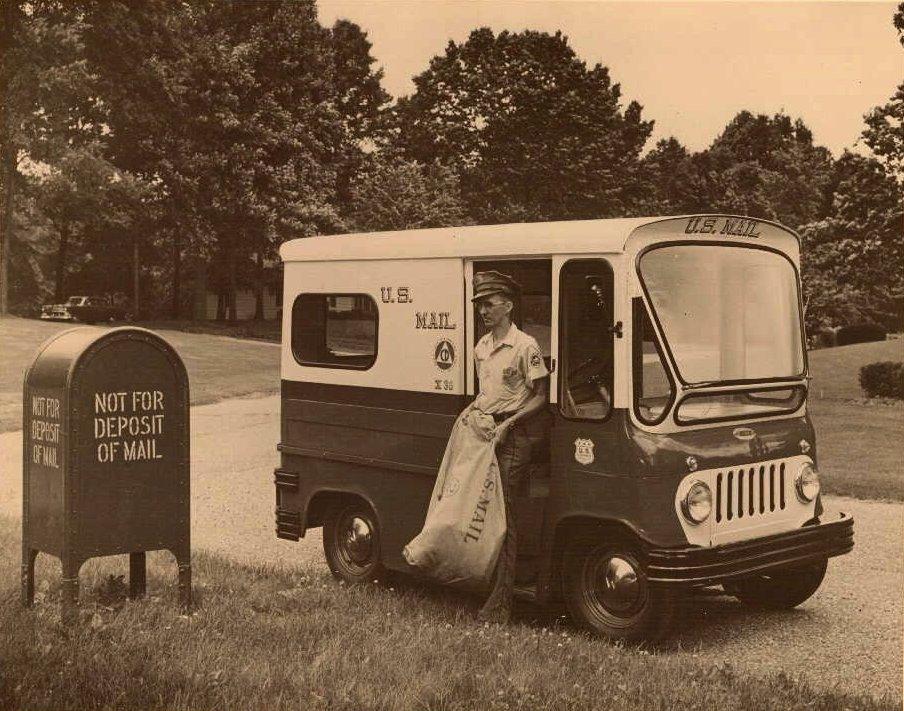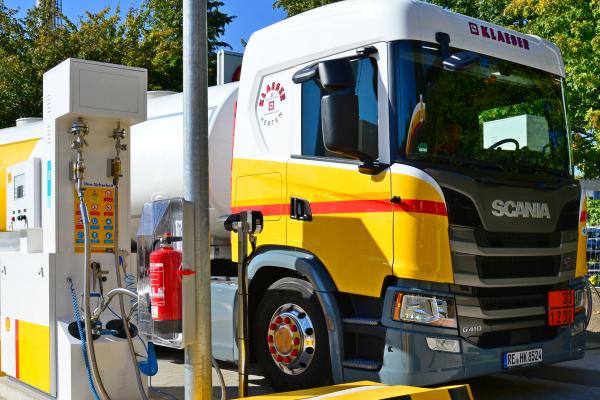
kscarbel2
Moderator-
Posts
18,550 -
Joined
-
Days Won
112
Content Type
Profiles
Forums
Gallery
Events
Blogs
BMT Wiki
Collections
Store
Everything posted by kscarbel2
-
Investigation into generic "cartel" expands to 300 drugs Christopher Rowland, The Washington Post / December 9, 2018 Executives at more than a dozen generic-drug companies had a form of shorthand to describe how they conducted business, insider lingo worked out over steak dinners, cocktail receptions and rounds of golf. The “sandbox,” according to investigators, was the market for generic prescription drugs, where everyone was expected to play nice. “Fair share” described dividing up the sales pie to ensure that each company reaped continued profits. “Trashing the market” was used when a competitor ignored these unwritten rules and sold drugs for less than agreed-upon prices. The terminology reflected more than just the clubbiness of a powerful industry, according to authorities and several lawsuits. Officials from multiple states say these practices were central to illegal price-fixing schemes of massive proportion. The lawsuit and related cases picked up steam last month when a federal judge ruled that more than 1 million emails, cellphone texts and other documents cited as evidence could be shared among all plaintiffs. What started as an antitrust lawsuit brought by states over just two drugs in 2016 has exploded into an investigation of alleged price-fixing involving at least 16 companies and 300 drugs, Joseph Nielsen, an assistant attorney general and antitrust investigator in Connecticut who has been a leading force in the probe, said in an interview. His comments in an interview with The Washington Post represent the first public disclosure of the dramatically expanded scale of the investigation. The unfolding case is rattling an industry that is portrayed in Washington as the white knight of American health care. “This is most likely the largest cartel in the history of the United States,” Nielsen said. He cited the volume of drugs in the schemes, that they took place on American soil and the “total number of companies involved, and individuals.” The victims were American health-care consumers and taxpayers, who foot the bills for overcharges on common antibiotics, blood-pressure medications, arthritis treatments, anxiety pills and more, authorities say. The costs flowed throughout the system, hitting hospitals, pharmacists and health insurance companies. They hit consumers who lack prescription drug coverage and even those with insurance, because many plans have high deductibles and gaps on prescription drug benefits. In just one instance of extraordinary cost spikes, the price of a decades-old drug to ease asthma symptoms, albuterol, sold by generic manufacturers Mylan and Sun, jumped more than 3,400 percent, from 13 cents a tablet to more than $4.70. The example is documented in a lawsuit brought against the generic industry by grocery chains including Kroger. “Everyone is paying the price,” Nielsen said. He offered a single word to explain the behavior: “Greed.” While precise estimates of alleged overcharges have not been released, generic-industry sales were about $104 billion in 2017. Excessive billings of even a small fraction of annual sales over several years would equal billions of dollars in added costs to consumers, according to investigators. Generic manufacturers reject the accusations. They contend officials lack evidence of a conspiracy and have failed to prove anti-competitive behavior. Among the 16 companies accused are some of the biggest names in generic manufacturing: Mylan, Teva and Dr. Reddy’s. Mylan denied wrongdoing in an emailed statement. Sun, Teva and Dr. Reddy’s did not respond to requests for comment. In a court filing, Teva said allegations of a price-fixing conspiracy “are entirely conclusory and devoid of any facts.” But investigators say voluminous documentation they have collected, much of it under seal and not available to the public, shows the industry to be riddled with price-fixing schemes. The plaintiffs now include 47 states. The investigators expect to unveil new details and add more defendants in coming months, which will put more pressure on executives to consider settlements. Two former executives of one company, Heritage Pharmaceuticals, have pleaded guilty to federal criminal charges and are cooperating with the Justice Department in a parallel criminal case. A Justice Department spokesman declined to comment. The alleged collusion transformed a cutthroat, highly competitive business into one where sudden, coordinated price spikes on identical generic drugs became almost routine. Competing executives were so chummy they had an alphabetical rotation for who picked up the tab at their regular dinners, according to a person familiar with the investigation who spoke on the condition of anonymity because the case remains under investigation. Annual trade conferences and “Girls Night Out” cocktail meetings were other prime opportunities to swap sensitive information about markets and prices, according to court documents. “It’s particularly ironic since the whole idea of generic drugs was we would get a lower price,” said Henry Waxman, the Democratic former California congressman who co-wrote the 1984 law establishing the Food and Drug Administration’s rules for generics. “If generic versions are higher than need be through rigged systems, that undercuts the whole idea.” Generics account for 90 percent of the prescriptions written in the United States but just 23 percent of costs, according to the industry trade group, the Association for Accessible Medicines. And generic drugs do act as a check on soaring drug bills fueled by brand-name manufacturers. In the Medicare prescription-drug program, according to a government study, prices on a benchmark set of older generic drugs dropped 14 percent between 2010 to 2015. But for some generic manufacturers, the anti-competitive agreements drove up prices on most, if not all, of the products they sold, according to the states. Officials say they have documented price increases of up to 2,000 percent. Throughout 2013 and 2014, soaring generic prices sparked consternation at drugstores and among state and federal lawmakers. Independent pharmacists said they were dismayed to learn of the price-fixing allegations. “There’s old, old drugs that have been around a long time, and all of a sudden their price has increased by hundreds of percent and we don’t know why,” said J.D. Fain, owner of Pieratt’s Pharmacy in Giddings, Tex., a small town an hour drive east of Austin. Unlike the brand-name drug industry, which gets years of patent exclusivity for novel drugs, generic companies operate in a market that was designed to save consumers and taxpayers large sums through aggressive competition. When the FDA grants approval for a generic product, the first company in the door gets six months of exclusive rights to market the drug. The price discount from the brand-name product is relatively small, say 10 percent. Prices plunge as much as 50 percent once a second generic enters the market, the FDA has estimated. And by the time six or seven generic companies are competing on a particular drug, the price has declined 75 percent. Rigging the market has turned that model upside down for some drugs, state officials say. “It makes me angry,” said Eric Belldina, an operator of pharmacies in Masontown and Morgantown in West Virginia. “Most people think when their prices go up it’s because of a raw-ingredient shortage, not thinking the companies are sitting down, saying, ‘Hey, let’s do this.’ ” The states’ lawsuit contains particularly pointed allegations against Mylan and its president, Rajiv Malik, who is personally named as a defendant. Mylan faced public scrutiny in 2016 for raising the price of its EpiPen, to treat allergic reactions, by about 500 percent. Although the EpiPen was not a generic product at the time, the outcry from physicians, patient groups and members of Congress drew negative attention to the second-largest generic manufacturer. While traveling in the United Kingdom in 2013, Malik took a phone call from an executive of a competing firm, Heritage, the states say in their lawsuit. Heritage had won FDA approval to market a version of the antibiotic doxycycline called Doxy DR, which is used to treat acne and a long list of infections. That would put it in direct competition with Mylan for sales of the drug. During the transatlantic phone call, Malik and the Heritage executive, Jeff Glazer, agreed to divide up the sandbox, the U.S. market for sales of Doxy DR, according to the lawsuit by states and similar complaints by independent pharmacies and grocery-store chains. During subsequent conversations, according to the complaints, Mylan agreed not to sell Doxy DR to CVS and the wholesaler McKesson — sales volume worth about 30 percent of the U.S. market for the drug. As part of the alleged deal, Heritage agreed not to set a low price. Without a reduction in price, U.S. consumers ended up the biggest losers in the deal. Mylan said it has no evidence its executives did anything wrong. “We have been investigating these allegations thoroughly and have found no evidence of price fixing on the part of Mylan or its employees,” the company said in a statement. “Mylan has deep faith in the integrity of its president, Rajiv Malik, and stands behind him fully.” Heritage did not return repeated phone messages. Glazer and another Heritage executive, Jason Malek, pleaded guilty in 2017 to federal charges of conspiring to rig prices and stifle competition. The terms of their plea agreements said they are cooperating with a Justice Department criminal probe. A drug to treat bone issues related to cancer, zoledronic acid, was the subject of another alleged price-fixing scheme, this time between Heritage and Dr. Reddy’s. Heritage became the first generic manufacturer of the drug in the spring of 2013, but Dr. Reddy’s was close behind. Executives at the companies cut deals so each got a “fair share” of the market, while also conspiring to fix an inflated price, the complaints said. Dr. Reddy’s, which did not respond to requests for comment, wound up with about 60 percent of the market and Heritage claimed 40 percent, according to the states’ lawsuit. Investigators cited evidence that executives knew they were acting illegally. As the discussions with Dr. Reddy’s took place, according to the complaints, a Heritage executive “sent a text message to his entire sales team reminding them not to put their pricing discussions with competitors in writing.” Mysterious price spikes continue to roil pharmacies and patient groups occasionally, though widespread price collusion was curtailed after authorities issued subpoenas in recent years, said Michael Cole, a Connecticut assistant attorney general actively involved in the case. But many drugs remain at artificially inflated prices. “There have not been rollbacks in the price increases,” he said. “We’re still paying.”
-
Isuzu Trucks Australia / December 4, 2018 The 2018 N Series was recently put to the test by Australia's top truck media. The consensus...a compelling example of why Isuzu is number one. Check out the latest range as it's put through its paces both on and off the blacktop. .
-
Prime Mover Magazine / December 5, 2018 International ProStar is touring a prime mover with loaded tri-axle single trailer on a regional ProStar Roadshow of Australia in a bid to showcase the model to prospective customers. A joint program between International and Australian distributor IVECO and engine partner, Cummins, the ProStar Roadshow will travel the country with key representatives to help demonstrate the truck’s features and benefits while also allowing for evaluation opportunities. The X15 Cummins rated 550 horsepower engine is matched with an Eaton Roadranger 18-speed manual transmission, and can be recalibrated by the team to an optional 600hp. Other features of the ProStar include a swept-back design with swooping nose, wrap around windshield, set-back ‘A’ pillars and streamlined bumper and aerodynamic guards for gains, reportedly, in fuel efficiency. ProStar claims it is up to 10 per cent more aerodynamic than traditional flat fronted commercial vehicles. Paul Dinicol, IVECO Key Account Manager said the brand had a strong legacy in regional Australia and his team were looking to reconnecting with it. “International Trucks are well regarded in rural and regional areas particularly for their durability and functionality – many rural fleets are in fact still operating older International models.” “With this in mind, we want to take the latest generation International ProStar to our customers and show them that while these trucks still have all the proven components for longevity from Cummins, Eaton, Meritor, Hendrickson and the like, the latest product offering also adds efficiency, comfort and refinement to the mix.” “Furthermore, with a short bumper to back of cab, the ProStar range is ideal for a wide range applications from tipper and dog to single trailer, B-double and even B-triple and two trailer roadtrain work. The model is versatile and a great fit for life in rural and regional Australia.” The ProStar Roadshow has kicked off in Central Victoria before it tours other states in 2019. .
-
Sorry your Mack brand distributor won't assist you (Name?). We don't have access to such information. Your last resort is to call Volvo Group's Mack brand customer satisfaction department at +1 (866) 298-6586.
-
Navistar outlines role within newly formed Traton Group alliance
kscarbel2 replied to kscarbel2's topic in Trucking News
Traton holds group conference in Munich Linkedin / December 3, 2018 Global collaboration is king! For the Alliance Leadership Conference our partner Navistar Inc and our TRATON brands MAN Truck & Bus AG, Scania Group, MAN Latin America and RIO The Logistics Flow came together in Munich. . -
Contact your local Mack brand distributor.
-
Carbon Kevlar front brake pads and slotted rotors, and rear shoes, will help. Note they offer a rear disc brake conversion for your dualie. Good people, good product......http://www.egrbrakes.com/Dodge parts list.htm I swear by Motul RBF600......https://www.amazon.com/Motul-MTL100949-Factory-Percent-Synthetic/dp/B004LEYJO4/ref=sr_1_1?m=ATVPDKIKX0DER&s=automotive&ie=UTF8&qid=1544390090&sr=1-1&keywords=rbf600&refinements=p_6%3AATVPDKIKX0DER
-
Land Line (OOIDA) / December 5, 2018 Navistar is recalling certain 2018-2019 model year International trucks. According to National Highway Traffic Safety Administration (NHTSA) documents, affected vehicles have an issue with the clutch assembly. Nearly 21,000 International automated manual transmission trucks with Eaton ECA [Electronic Clutch Actuator] heavy-duty truck clutches [featured on UltraShift Plus and Advantage AMTs] are part of the recall. An internal component in the clutch assembly may fail, possibly resulting in unintended vehicle movement. Unintended vehicle movement can increase the risk of a crash. The following International truck models are included in the recall: HV (2019) HX (2018-2019) Lonestar (2018-2019) LT (2018-2019) MV (2019) Prostar (2018-2019) RH (2018-2019) Transtar (2018) Workstar (2018-2019) Owners of affected trucks will be notified by Navistar. Dealers will recalibrate the transmission control module for free. Recalls are scheduled for Jan. 18. For questions, call Navistar customer service at 800-448-7825 with recall number 18518. NHTSA’s number for this recall is 18V-826.
-
Cultural decay and declining standards of behavior in these United States A scumbag (Charles Alton Stratton Jr) steals purses from elderly women......and then drives over them. An obese mini-van driver does nothing more than look at the obviously injured elderly woman on the ground. If I was king for a day, I would first of all order Mr. Stratton to be tied to the ground and driven over with his own RAV4 (an eye for an eye). Then I would liquidate his property including the car to reimburse the government (the American taxpayer) for his handling to our new penal colony. .
-
$140,000 new truck purchase
kscarbel2 replied to mojazzn's topic in Antique and Classic Mack Trucks General Discussion
I think International deserves credit for first creating the modern "Baby 8" with their Loadstar 6x4 models. -
FCA presents U.S. Postal Service withe alternative Next Generation Delivery Vehicle (NGDV) proposal. .
-
$140,000 new truck purchase
kscarbel2 replied to mojazzn's topic in Antique and Classic Mack Trucks General Discussion
What brand and model truck? Dealer name and location? Full specifications list? (scan and attach the quotation) No such thing as an average discount along the lines you are thinking. -
Pre purchase suspension conversion question
kscarbel2 replied to JoeH's question in Mack Truck Q & A
You're creating a can of worms. Respectfully speaking, you'd be far better off to buy a truck factory-spec'd as you want/need. -
Bud Wilkinson, Waterbury Republican American / December 7, 2018 It once traveled the roadways of northwestern Connecticut for Lakeside Oil, Inc. in Torrington, but a 1949 Studebaker fuel truck has been parked in a shed in Vermont for more than 30 years. Frank Sprague of Wilmington, Vt. recently purchased it. While it may not be running, it has been getting a lot of attention. It’s parked in a snow-filled lot alongside Route 9 in Searsburg, Vt., at least that’s where it sat last Sunday. It’s not in running condition and probably hasn’t been on the road for decades. Even if it did run, the right rear tire is flat, and it has other issues. “The brake drums are rusted to the brake shoes, so the wheels don’t turn. I haven’t tried to turn over the engine. I don’t know if it will or not. The sheet metal, the frame, the tank, all that looks really good, but it will need a lot of mechanical work,” said Frank Sprague of nearby Wilmington, the owner of the 1949 Studebaker truck. Sprague bought the Studebaker only a month or so ago with the intention of flipping it. When he posted a “for sale” ad on Facebook Marketplace, My Ride was soon alerted by a browser who noticed that the former kerosene delivery truck displays an old Harwinton telephone number (as well as one for Burlington). The truck once belonged to Lakeside Oil of Torrington and bears the company’s name on either side and on the rear. How the 70-year-old truck came to survive presented a mystery worth investigating; prompted sufficient curiosity for an area fuel company owner to go look at it; and brought back memories for a man who once drove it. Sprague, a former trucker who owns a welding shop and collects vintage big-rig trucks, reported that he’s known about the truck for some time. “A kid came in my shop and told me about it a couple of years ago. I tried to contact the lady with no success. Then I ran across her phone number again, so I called her and got through. Went and talked to her, looked at the truck, and made the deal,” he said. “The lady said that her and her husband used to deliver kerosene with it in Connecticut and that when they moved to Vermont thirty-some years ago, they brought the truck and parked it in their shed, and it sat there since.” Harwinton historian Roger Plaskett did some digging and determined that Lakeside Oil was owned by John Berberian, his wife Kristine, and brother Harry Berberian. The company operated from 1978 to 2003, but Plaskett unearthed a small newspaper clipping that showed the family sold out in 1986. John Berberian passed away in 2009 and Sprague bought the Studebaker from his widow. The truck has generated a lot of interest in a very short time. “There’s been tons of interest. Big oil companies in the northeast have contacted me about it. I’m talking to a couple seriously right now,” he said. Passers-by have also noticed it and pulled the parking lot at the warehouse that Sprague owns. “Oh, gosh, yes, whether I’m here or not. I’ve pulled in the yard and there’s people here looking a it,” he said. One tire-kicker on Sunday was Matt Klebe, owner of Klebe Fuel in Winsted. “It’s a good piece of history,” he said after looking over the Studebaker. He also recalled, “I actually pulled oil out of the Lakeside Terminal years ago.” Sprague’s asking price for the truck is $6,500, more than Klebe was willing to pay based on his proposed use for it. “I think it would be a nice piece of lawn art; draw attention to my business,” Klebe said. The truck was produced as part of Studebaker’s “2R” series, which were made from 1949 until 1954. Aaron Warkentin, curator of the Studebaker National Museum in South Bend, Ind., said the model initially had a 226-cubic-inch flat-head, six-cylinder engine, but that midway through the 1949 model year the engine size was increased to 245 cubic inches, which produced around 100 horsepower. Having been emailed pics of the truck, Warkentin responded, “It is in fantastic shape. That would serve well as a preservation, not restoration.” Pictures of the truck posted on Facebook also got noticed and stirred memories for Brian MacDonald of Torrington, who works in the Town of Harwinton’s highway department but who worked for Lakeside Oil in the late 1970s. “I was very surprised that any of their trucks were still around. Brought back a lot of memories. I knew that the owners had moved to Vermont. I was just surprised that there was an actual truck still around,” said MacDonald, who revealed his once even drove it from one company gas station to another. At that time, the truck was being used for kerosene storage. “I didn’t drive it very far, but I did drive it. I think it was pretty much retired by then. It was parked in the garage quite a bit, so I don’t think it was used that much when I was there,” he recalled. Lakeside Oil apparently didn’t last very long. “They were one of the smaller companies. They only had a couple of oil trucks. They weren’t really a major player in the heating oil business. They did a pretty good kerosene business back then,” MacDonald said. The Studebaker truck has lasted much, much longer than the company, and may have a future yet if the right buyer is found. Video & Photo Slide Show - http://wheels.rep-am.com/2018/12/49-studebaker-truck-has-history/
-
Chevrolet Camaro Chief Engineer Al Oppenheiser Reassigned to GM’s Electric Vehicle Group Andrew Wendler, Car & Driver / December 7, 2018 After years on Camaro, Al Oppenheiser will jump-start efforts on the full range of future General Motors EVs. Al Oppenheiser, chief engineer and spiritual leader of the Chevrolet Camaro program for more than a decade, is moving to General Motors' newly formed AV/EV organization to focus on zero-emission-vehicle development. Mark Dickens, current executive director of Performance Variants, Parts, Accessories, and Motorsports Engineering—not to mention card-carrying member of the Bonneville Salt Flats 200-MPH Club—will assume Oppenheiser's role as chief engineer of the Camaro program. Credited with shepherding the fifth- and sixth-generation Camaro and performance variants such as the Z/28 and the ZL1 into existence, Oppenheiser developed a loyal team of colleagues within Chevrolet—not to mention the respect of the Camaro community and of Chevrolet performance fans as a whole. There is a contingent of late-model Camaro enthusiasts for whom Oppenheiser represents the human element behind the sheetmetal, tiny daylight openings and all. How they will react to his departure remains to be seen. General Motors spokesman Michael Albano told C/D that, because electrification is playing a huge role at GM, the automaker is moving "some of our best talent" to work on current and upcoming projects. He acknowledged that this is a lateral move and not an elevation of position for Oppenheiser, who will remain a chief engineer. "We have launched the final variant of this generation of Camaro, so the time is right" for him to move, Albano added. While Albano told us that Oppenheiser's appointment doesn’t necessarily indicate that GM will immediately begin working on a Camaro EV or a similar performance-focused EV, the company has not "ruled out in the future that we [could] have performance cars that are electrified." Oppenheiser's responsibility will reportedly be "broader than one specific vehicle" and he will be working on a variety of EVs with a range of different body styles. In his new role, Oppenheiser will play a key role in GM’s future vision of zero-emission vehicles. Oppenheiser’s career at GM began in 1985, and he has been Camaro chief engineer since 2007, responsible for all variants of the fifth- and sixth-generation Camaro. He joined the Chevrolet performance-car team after spending four years as the director of concept and vehicle integration for the GM Performance Division. His ascension through the ranks is due in no small part to his reputation for always delivering and finding ways to work through the organization to bring projects to fruition. He certainly delivered a lighter and much better-driving Camaro in its latest, sixth generation. "Now he's moving to an area where we can’t afford not to deliver the right kind of vehicle to customers,” Albano said. Albano said that Oppenheiser is excited and, although he may have some reservations, knows that Dickens is the right guy to take over for him. "I thought I'd die in this role, but I'm happy to be part of the future," Oppenheiser reportedly said. The outgoing Camaro chief engineer will start in his new position in early January, in the same time frame with other global product-development staff changes, Albano told C/D.
-
Ford begins European restructuring with management shakeup Nick Gibbs, Automotive News Europe / December 7, 2018 LONDON -- Ford has taken the first step in restructuring its money-losing European business that is expected to involve axing models, cutting jobs, and possibly factory closures. Ford has appointed executives in Germany and the UK to implement its plan, called “Sprint to 6 Reset and Redesign,” the automaker said in a news release on Friday. The name refers to Ford’s aim to reach a 6 percent EBIT profit margin. The company did not give a timeframe for the target. Ford said its former head of quality, Gunnar Herrmann, will head the restructuring in Germany, while Graham Hoare will carry out the same task in the UK. Hoare was previously responsible for Ford’s test and development operations worldwide. The bulk of announcements around the restructuring are expected between now and the beginning of 2020, a Ford spokesperson said. Ford has said the European plan will involve concentrating on its profit-making SUVs and commercial vehicles and cutting unprofitable model lines. The company will also rely more heavily on partnerships to keep down costs. Ford and Volkswagen Group have said they are discussing an alliance for commercial vehicles. This may be broadened to include potential collaboration on autonomous driving and arrangements to make vehicles for one another, Bloomberg reported in October. Ford has not confirmed that. Ford already has a long-term partnership with PSA Group to share engines. Ford lost $245 million in Europe in the third quarter, compared with a loss of $53 million in the same quarter last year. This was due to weakness in Turkey and Russia, and launch-related costs for the latest Focus compact car, the company said on Oct. 23. Morgan Stanley estimates the bulk of Ford’s $11 billion global restructuring plan will center on Europe and the region will suffer the bulk of 25,000 global job losses it believes Ford is planning. It values Ford’s European business at “negative $7 billion,” Morgan Stanley analyst Adam Jonas said in a note. Ford called the Morgan Stanley job cut estimates “pure speculation.” However, the automaker has said its restructuring would happen “largely outside of North America.” In July, Ford’s Chief Financial Officer Bob Shanks said the bulk of Ford’s European vehicle range was unprofitable. This consisted “principally of cars and multi-activity vehicles [minivans] such as C-Max,” he said. Ford’s Transit van, Kuga SUV and Ranger pickup and “selected imports” are selling profitably in Europe, Shanks said, without naming the imported vehicles. They are likely to include the Edge midsize SUV and the Mustang sports car. Jim Farley, Ford’s head of global markets, said commercial vans are earning 13 percent profit margins for the automaker in Europe. He acknowledged that Ford has been slow to expand in the SUV segment in Europe. Ford has said it expects a full-year loss in 2018 in Europe after earning $234 million in the region last year as it battles headwinds such as the weak pound in the UK, its biggest European market, high raw material costs and a slump in demand for once-core models. Ford has about 54,000 employees in Europe and 24 manufacturing facilities, data from the company shows.
-
Some 2019 GM pickups will have lower mpg than outgoing models Michael Wayland, Automotive News / December 7, 2018 The fuel economy on some redesigned Chevrolet Silverado and GMC Sierra models will be worse than the outgoing pickups they're replacing. Ratings on fueleconomy.gov have 2019 models equipped with 4.3-liter V-6 and 5.3-liter V-8 engines getting up to 3 mpg combined less than comparable 2018 pickups. The engines are mated to a six-speed automatic transmission. It's unusual for outgoing models with essentially carryover powertrains — aside from small changes such as tuning to engines and transmissions — to be rated higher than redesigned vehicles that are replacing them. Monte Doran, a Chevrolet spokesman, attributed the difference in fuel economy to the redesigned trucks being more capable and larger than the outgoing models, which in turn increases aerodynamic drag. "We increased towing capacity, payload, and it's a much larger bed and a much larger cab," he said. While aerodynamic efficiency increased 7 percent and the automaker cut out hundreds of pounds on the redesigned Silverado, Chevrolet says the frontal area also increased — resulting in the same aerodynamic load. The Sierra is slightly more aerodynamic than the Silverado. However, it's still larger than the outgoing model. Aside from differences in engineering and design, auto writer Bozi Tatarevic, who initially tweeted the differences, pointed out the rear axle gear ratios also are different between the model years. GM was able to offset much of the aerodynamic drag for models with other engine options, which experienced small increases in fuel economy, with new technologies such as dynamic fuel management and higher-speed transmissions. The 4.3-liter V-6 and 5.3-liter V-8 engines are standard or available on entry-level and lower-end trims on the pickups. The 2019 two-wheel-drive models with the 4.3-liter V-6 engine are rated at 17 combined (16 city/21 highway). That's down 3 mpg compared with 2018 models at 20 combined (18 city/24 highway). Redesigned four-wheel-drive models with the V-6 engine are rated at 17 combined (15 city/20 highway), down 2 mpg from the 2018 pickups that were rated at 19 combined (17 city/22 highway). The 5.3-liter models with four-wheel-drive and two-wheel-drive also are rated 17 mpg combined. However, the highway fuel economy for four-wheel-drive models is 1 mpg less at 20 highway, and city is 15. That compares with 2018 four-wheel-drive models at 18 mpg combined (16 city/20 highway) and two-wheel-drive models at 19 mpg combined (16 city/23 highway). The Chevrolet Trail Boss models, new lifted trims with four-wheel-drive and off-road equipment, with the engines are rated at 16 combined (14 city/18 highway).
-
Volvo Charges Up E-Garbage Trucks to Get Ahead of Tesla’s Rig
kscarbel2 replied to kscarbel2's topic in Trucking News
Aren't they Jim? The Peterbilt Model 520 is fast becoming America's garbage truck chassis of choice. -
Remembering Pearl Harbor - December 7, 1941
kscarbel2 replied to mrsmackpaul's topic in Odds and Ends
"Yesterday, December 7, 1941 - a date which will live in infamy - the United States of America was suddenly and deliberately attacked by naval and air forces of the Empire of Japan." -
Scania Group Press Release / December 6, 2018 A consortium called BioLNG EuroNet today announced a commitment to the further expansion of LNG (liquefied natural gas) as a road transport fuel across Europe with new infrastructure that should ensure the long-term success and mass scale adoption. The consortium, comprising Shell, Disa, Scania, Osomo and Iveco will each deliver separate activities that will see 2,000 more LNG trucks on the road, 39 LNG fuelling stations and the construction of a BioLNG production plant in the Netherlands. The LNG Retail stations will form part of a pan-European network and be built in Belgium, France, Germany, the Netherlands, Poland and Spain. The stations will be located approximately every 400 km along core road network corridors from Spain to Eastern Poland. “LNG is an increasingly affordable fuel for heavy goods vehicles which will make it an important energy source as the transport sector evolves,” said Istvάn Kapitάny, Executive Vice President, Shell Retail. “Shell is committed to offering our customers more lower carbon energy and the new LNG Retail stations are a vital piece of the puzzle. I look forward to seeing this important network of stations welcome European motorists in the years to come.” The bioLNG facility will produce 3000 MT/year of BioLNG and will use biomethane produced from waste. This will be sold to end-users via the LNG network. “This program covers filling stations, biofuel production and subsidies which are all necessary for progressive customers to invest in the trucks, despite the extra initial cost,” say Jonas Nordh, Director Sustainable Transport Solutions, Scania. “Whilst LNG which reduces CO2 emissions by about 20 percent, is more broadly available today, biogas, which reduces CO2 emissions by over 90 percent, can increasingly be blended in with the natural as production of biogas is ramped up.” BioLNG EuroNet has an aspiration to rollout the expansion of LNG as a road transport fuel across Europe even further in the future. About the project: The BioLNG Euronet project is bringing together major players in the European market: Shell, DISA, Osomo, Scania and Iveco. These project partners aim to help the European Union meet its goal of a 60 percent reduction in CO2 emissions by 2030, by triggering long-term decarbonisation of heavy duty road transport across mainland Europe. The bioLNG facility to be constructed in the Netherlands will collect municipal waste from supermarkets and restaurants and process this into biogas. The technology will use new patented membrane separation technology that will enable biologically derived LNG. The 2,000 new LNG Heavy Goods Vehicles will be leased to end users through competitive financing and trucking solutions to reduce the cost of them. Only the additional costs of an LNG HGV compared to a diesel truck will be financed. The average eligible costs for each LNG truck are capped to a maximum of €30,000. The energy density of BioLNG means that trucks can travel longer distances, better suiting the needs of transport operators now, and in the future. Due to the use of industrial organic waste as a resource, the CO2emissions will be much lower than the CO2 emissions of traditional fuels. BioLNG is essential in achieving the long-term aim of further decarbonisation for the road transport sector in Europe by 2030. BioLNG virtually eliminates sulphur and offers a reduction in NOx and particulate matter. Each BioLNG EuroNet consortium member will receive 20 percent funding from the EU towards the cost of their commitments. The EU funding received by the BioLNG EuroNet consortium members falls under the connecting Europe facility (CEF) for the transport sector. Directive 2014/94/EU of the European Parliament and of the Council of 22 October 2014 on the deployment of alternative fuels infrastructure defines a common framework of measures for the deployment of alternative fuels infrastructure in the European Union and to mitigate the environmental impact of transport. It sets out minimum requirements for the building-up of alternative fuels infrastructure, including LNG (Liquefied Natural Gas) and Compressed Natural Gas (CNG). .
-
Yet another bad appointee.
-
Trump picks Heather Nauert as new US envoy to UN US President Donald Trump has picked state department spokeswoman Heather Nauert to be America's new UN ambassador. The president also nominated William Barr as the new attorney general. Ms Nauert, a former Fox News presenter, was made state department spokeswoman in April 2017, her first government position. Her predecessor at the UN, Nikki Haley, announced in October that she would leave the post by the end of the year. Ms Nauert's appointment to the UN role now has to be approved by the US Senate. After making the announcement, President Trump told reporters: "She's very talented, very smart, very quick, and I think she's going to be respected by all." The 48-year-old was also appointed acting undersecretary for public diplomacy and public affairs in March this year. She worked for Fox News from 1998 to 2005 and, after two years away during which she worked for ABC, she returned to Fox in 2007, later becoming a presenter for Fox & Friends. Fox News has been a consistent supporter of the president and he often cites its news. --------------------------------------------------------------- The skills to sell 'America first' By Nada Tawfik, BBC UN reporter Heather Nauert's meteoric rise is remarkably unusual considering that she has been in government for less than two years, and has never specialised in international relations. Past ambassadors have been scholars, diplomats or prominent politicians. The role has often gone to skilled negotiators and leading names in US foreign policy, such as Adlai Stevenson and Madeleine Albright. But President Trump values her loyalty and her TV skills. He trusts her to effectively sell America First over multilateralism. Diplomats at the UN will know she is held in high regard by the president, his daughter and the secretary of state, Mike Pompeo. They will also be aware of how her resume sharply contrasts with theirs. It will be interesting to see how those dynamics could play out during this tumultuous time on the Security Council, with the most challenging crises being Yemen, North Korea and Syria. .
-
Brian Spegele & Kate O'Keeffe / The Wall Street Journal Boeing Co. said Thursday it was canceling a controversial satellite order that was financed by a Chinese government-owned firm, citing “default for nonpayment.” Boeing’s decision follows a Wall Street Journal investigation this week that highlighted China’s opaque role in funneling around $200 million to the project, called Global IP. Under U.S. export-control laws, Boeing isn’t allowed to sell satellites to China directly. Boeing faced criticism after the article’s publication that it attempted to sidestep U.S. regulations of sensitive satellite technology, which the U.S. military relies on.
BigMackTrucks.com
BigMackTrucks.com is a support forum for antique, classic and modern Mack Trucks! The forum is owned and maintained by Watt's Truck Center, Inc. an independent, full service Mack dealer. The forums are not affiliated with Mack Trucks, Inc.
Our Vendors and Advertisers
Thank you for your support!


